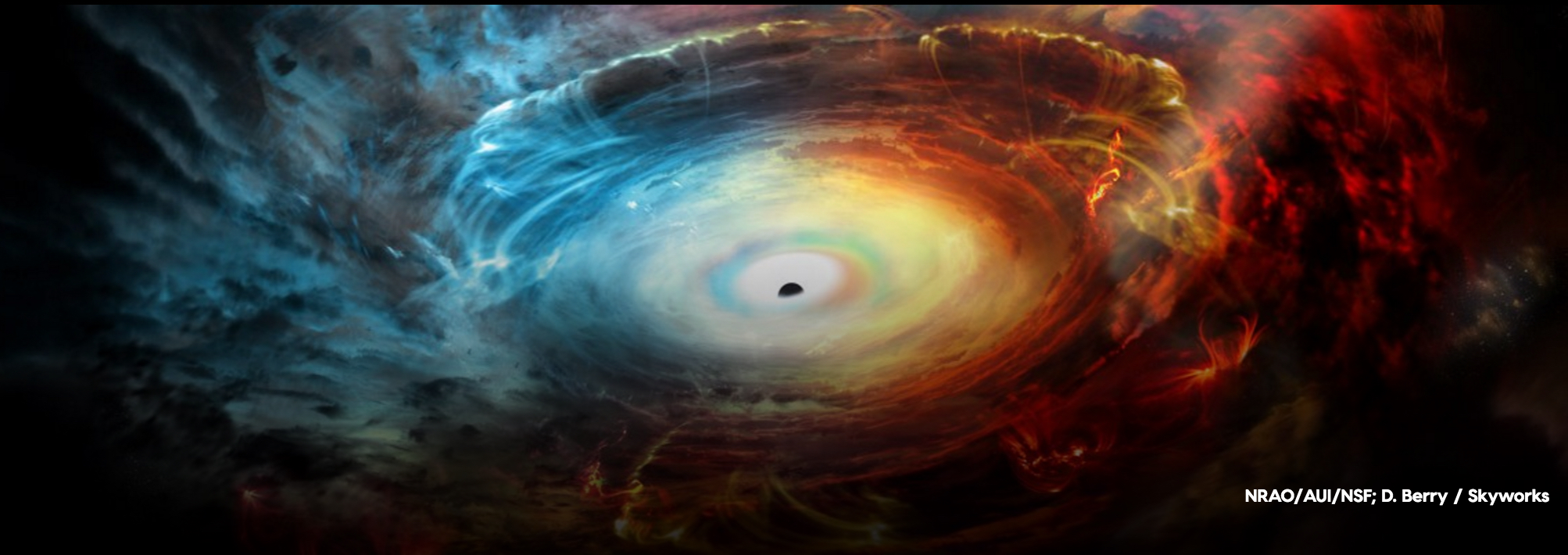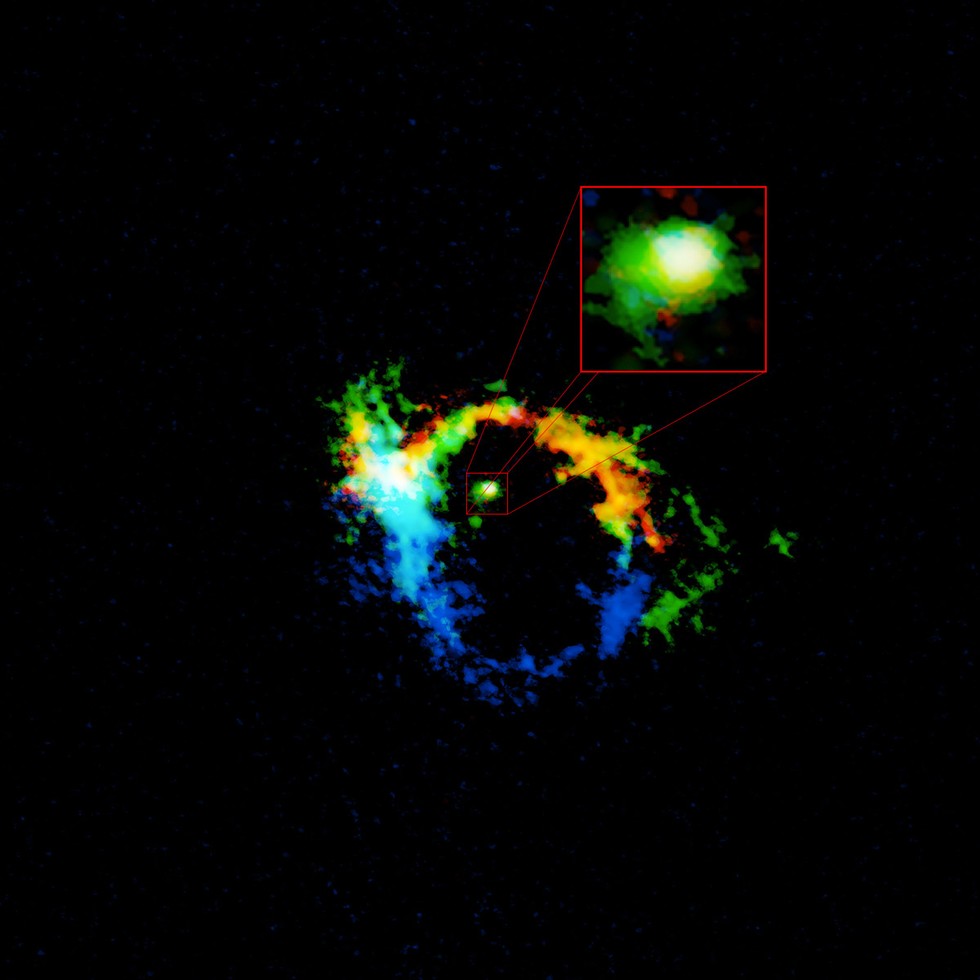Black Hole 'Engine' Cloaks Itself in Exhaust Fumes

Many supermassive black holes in the centers of galaxies possess a thick ring of material known as a torus. Appearing like a supersized doughnut, astronomers have long thought that these features were created by churned-up material from the galactic core itself, falling into the black hole's gravitational well.
However, according to powerful new observations by the the Atacama Large Millimeter/submillimeter Array (ALMA) in Chile, this conventional model is, apparently, far too simple.
RELATED: The Race to See Our Supermassive Black Hole
While studying the environment surrounding the supermassive black hole in the core of the barred spiral galaxy NGC 1068 47 million light-years away, ALMA was able to track clouds of material being flung outwards by the black hole, creating its own torus rather than material falling in.
WATCH VIDEO: The Race To See The Black Hole At Our Galaxy's Core
"Think of a black hole as an engine," said astronomer Jack Gallimore, of Bucknell University in Lewisburg, Pennsylvania, in a statement. "It's fueled by material falling in on it from a flattened disk of dust and gas. But like any engine, a black hole can also emit exhaust."
RELATED: Supermassive Black Holes are Not Doughnuts!
Breaking space news, the latest updates on rocket launches, skywatching events and more!
Black holes consuming matter possess accretion disks, which are basically flat and hot features that swirl around the black hole's event horizon. The innermost section of the accretion disk is so hot that it generates X-ray and ultraviolet radiation, but further out, the disk is cooler and emits infrared and millimeter wavelength radiation. ALMA is very sensitive to the latter, allowing the observatory to track the motion of the gases in the outermost portion of NGC 1068's accretion disk.
While following cool clouds of carbon monoxide gas inside this cooler accretion disk region, Gallimore's team saw the clouds lift off the disk. As they become ionized by the superheated portion of the accretion disk, the clouds started to interact with the black hole's powerful magnetic field. The gas was then flung away from the accretion disk at high speed, far faster than the rotational speed of the disk itself.
"These clouds are traveling so fast that they reach 'escape velocity' and are jettisoned in a cone-like spray from both sides of the disk," said Gallimore. "With ALMA, we can for the first time see that it is the gas that is thrown out that hides the black hole, not the gas falling in."
RELATED: Black Hole's Rejected Snack Becomes Science Goldmine
The vast majority of galaxies are known to contain supermassive black holes in their cores. They have a symbiotic relationship and the activity of black holes are known to have a powerful influence over the galaxies as a whole, even impacting the rate of star formation. Now, with observatories like ALMA, we're beginning to see the intricacies of this relationship and their impact on the hearts of galaxies.
Source: NRAO
Originally published on Discovery News.
Ian O'Neill is a media relations specialist at NASA's Jet Propulsion Laboratory (JPL) in Southern California. Prior to joining JPL, he served as editor for the Astronomical Society of the Pacific‘s Mercury magazine and Mercury Online and contributed articles to a number of other publications, including Space.com, Space.com, Live Science, HISTORY.com, Scientific American. Ian holds a Ph.D in solar physics and a master's degree in planetary and space physics.

